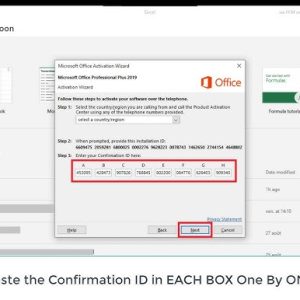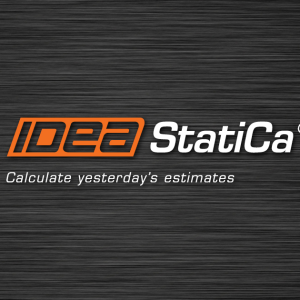“STEPCOL” — STEPPED COLUMN ANALYSIS
-
 MS Office Home & Business 2024 – Lifetime License Key – Mac/PC$150.00 – $160.00
MS Office Home & Business 2024 – Lifetime License Key – Mac/PC$150.00 – $160.00 -
![STEPPED COLUMN ANALYSIS 4 [Retail] Office 2021/2019/2016 Pro Plus Activates 5 PCs Online](https://civilmdc.com/wp-content/uploads/2024/05/Microsoft-Office-professional-plus-all-in-one-free-download-e1717158603220-300x300.jpg) [Retail] Office 2021/2019/2016 Pro Plus Activates 5 PCs Online$50.00 – $120.00
[Retail] Office 2021/2019/2016 Pro Plus Activates 5 PCs Online$50.00 – $120.00 -
 Microsoft office /Windows Activation Service for Phone Activation Method (Get Confirmaiton ID)$3.00
Microsoft office /Windows Activation Service for Phone Activation Method (Get Confirmaiton ID)$3.00 -
 MS SQL Server 2022 Standard | 1 Key for 1 PC$80.00
MS SQL Server 2022 Standard | 1 Key for 1 PC$80.00 -
 Youtube Premium | 4 months Premium Membership$10.00
Youtube Premium | 4 months Premium Membership$10.00 -
Product on sale
 Adobe Stock 40 creditsOriginal price was: $99.00.$20.00Current price is: $20.00.
Adobe Stock 40 creditsOriginal price was: $99.00.$20.00Current price is: $20.00. -
Product on sale
 MS Office 2021 Home & Business 1 MAC Bind for iOSOriginal price was: $429.00.$85.00Current price is: $85.00.
MS Office 2021 Home & Business 1 MAC Bind for iOSOriginal price was: $429.00.$85.00Current price is: $85.00. -
 MS Office 365 Personal | Family Plan on Your Email Id – 1 Year subscription$30.00 – $66.00
MS Office 365 Personal | Family Plan on Your Email Id – 1 Year subscription$30.00 – $66.00 -
 MS Project Professional 2024 | 2021 | 2019 | 2016 1 PC Online key Activation$20.00 – $55.00
MS Project Professional 2024 | 2021 | 2019 | 2016 1 PC Online key Activation$20.00 – $55.00 -
Product on sale
 Adobe Creative Cloud (All apps) – PersonalOriginal price was: $560.00.$200.00Current price is: $200.00.
Adobe Creative Cloud (All apps) – PersonalOriginal price was: $560.00.$200.00Current price is: $200.00. -
 Windows Server 2019 Online Key$22.00
Windows Server 2019 Online Key$22.00 -
 MS Office Visio Professional 2024 | 2021 | 2019 | 2016 PC Online Key Activation$20.00 – $45.00
MS Office Visio Professional 2024 | 2021 | 2019 | 2016 PC Online Key Activation$20.00 – $45.00 -
Product on sale
 MS 2019 Project Professional Windows 1 PC Online keyOriginal price was: $429.00.$22.00Current price is: $22.00.
MS 2019 Project Professional Windows 1 PC Online keyOriginal price was: $429.00.$22.00Current price is: $22.00. -
 McAfee LiveSafe Internet Security Antivirus 1 PC – 10 YEARS – Key$29.00
McAfee LiveSafe Internet Security Antivirus 1 PC – 10 YEARS – Key$29.00 -
 Office Professional 2016 /2013/2010 – Lifetime License Key – 1PC$14.00 – $16.00
Office Professional 2016 /2013/2010 – Lifetime License Key – 1PC$14.00 – $16.00
Program Description:
“STEPCOL” is a spreadsheet program written in MS-Excel for the purpose of analyzing stepped columns
typically used in mill-type buildings to determine the effective lengths and effective length K factors.
This program is a workbook consisting of three (3) worksheets, described as follows:
Worksheet Name Description
Doc This documentation sheet
Stepped Column Eff. Lengths Effective Lengths and Effective Length Factors (K)
References References “a”, “b”, and “c” (as an ebedded PDF file object)
Program Assumptions and Limitations:
- This program is based on the following references:
a. “Calculation of Effective Lengths and Effective Slenderness Ratios of Stepped Columns”
by: John P. Anderson and James H. Woodward (AISC Engineering Journal, Oct. / 1972, pages 157-166)
b. “Calculation of Effective Lengths of Stepped Columns”
by: Krishna M. Agrawal and Andrew P. Stafiej (AISC Engineering Journal, 4th Quarter / 1980, pages 96-105)
c. “Calculation of Effective Lengths of Stepped Columns” (Errata)
by: Krishna M. Agrawal and Andrew P. Stafiej (AISC Engineering Journal, Third Quarter / 1981, page 126)
d. “Steel Design Guide 7 – Industrial Buildings, Roofs to Anchor Rods” (2nd Edition)
by: James M. Fisher (AISC / 2004, Appendix B, pages 89-98) (Note: does not include errata from Ref. “c”.) - This program utilizes a simple iterative solution for determining the root, “Z”, to each of the characteristic
equations shown below, per references “a” and “b” listed above. The program calculates an initial guess
(Zst) for “Z”, evaluates the expression, increments the value of “Z” by a value equal to the initial guess, and
then evaluates the expression again, etc., etc. The results of each pair of evaluation iterations are multiplied
times each other to determine the location where the value passes through 0 (changes sign). Per the
references, the first (lowest) root is the desired/correct solution to the characteristic equation, although there
are multiple roots. Once the pair of iterations have been identified which locate the first (lowest) root, the
program performs a linear interpolation between those two values to determine the point where “Z” = 0.
The program performs up to a maximum of 4000 iterations to find the correct solution for “Z”. - This program contains “comment boxes” which contain a wide variety of information including explanations
of input or output items, equations used, data tables, etc. (Note: presence of a “comment box” is denoted
by a “red triangle” in the upper right-hand corner of a cell. Merely move the mouse pointer to the desired
cell to view the contents of that particular “comment box”.)
-
 Bitdefender Total Security Antivirus | Genuine Activation Code$30.00
Bitdefender Total Security Antivirus | Genuine Activation Code$30.00 -
 IDEA StatiCa Education$30.00
IDEA StatiCa Education$30.00 -
 Stealth Writer AI | Bypass AI Detection | Get 100% Human Score$10.00
Stealth Writer AI | Bypass AI Detection | Get 100% Human Score$10.00 -
 Adobe Acrobat XI Professional with License Key Activation$29.00
Adobe Acrobat XI Professional with License Key Activation$29.00 -
 Autocad 2007 – OFFLINE INSTALLER + Video Tutorial Install and activation – LIFETIME$7.00
Autocad 2007 – OFFLINE INSTALLER + Video Tutorial Install and activation – LIFETIME$7.00 -
 ChatGPT PLUS Subscription$7.00
ChatGPT PLUS Subscription$7.00 -
 ESET Internet Security Antivirus | 1 Year License$20.00
ESET Internet Security Antivirus | 1 Year License$20.00 -
 Course Hero Account 📗1 month$10.00
Course Hero Account 📗1 month$10.00 -
 General Software Collection | Request books, Codes, Research Articles | Request Software on Demand$3.00 – $35.00
General Software Collection | Request books, Codes, Research Articles | Request Software on Demand$3.00 – $35.00 -
 Vmware Workstation 16 Pro Lifetime License$150.00 – $199.00
Vmware Workstation 16 Pro Lifetime License$150.00 – $199.00 -
 NORD VPN/IP Vanish Account Subscription 6 Month | 1 Year | 2 Years$20.00 – $60.00
NORD VPN/IP Vanish Account Subscription 6 Month | 1 Year | 2 Years$20.00 – $60.00 -
 Internet Download Manager IDM Version 6.41 fully lifetime activation with installation video | 5 times faster download (Pre-Activated)$6.00
Internet Download Manager IDM Version 6.41 fully lifetime activation with installation video | 5 times faster download (Pre-Activated)$6.00 -
 Adobe Acrobat Pro DC 2024 | 2023 | 2022 | 2021 | 2020 | Latest Full Version | Lifetime$10.00 – $20.00
Adobe Acrobat Pro DC 2024 | 2023 | 2022 | 2021 | 2020 | Latest Full Version | Lifetime$10.00 – $20.00 -
![STEPPED COLUMN ANALYSIS 31 Sketch Up Pro 2024 | 2023 | 2022 | 2021 Full Package Bundle + Vray 6 + Enscape 3.4 + Thea Render 3.5 [Lifetime & Full]](https://civilmdc.com/wp-content/uploads/2022/03/Sketch-Up-Pro-2023-300x300.jpg) Sketch Up Pro 2024 | 2023 | 2022 | 2021 Full Package Bundle + Vray 6 + Enscape 3.4 + Thea Render 3.5 [Lifetime & Full]$10.00 – $40.00
Sketch Up Pro 2024 | 2023 | 2022 | 2021 Full Package Bundle + Vray 6 + Enscape 3.4 + Thea Render 3.5 [Lifetime & Full]$10.00 – $40.00 -
 Adobe 2024 | 2023 | 2022 Full Collection$25.00 – $35.00
Adobe 2024 | 2023 | 2022 Full Collection$25.00 – $35.00


